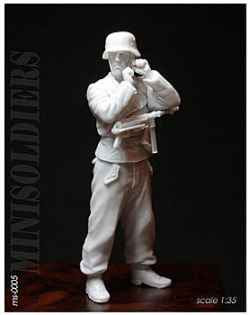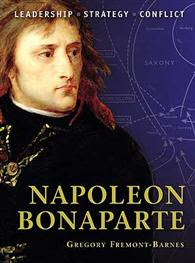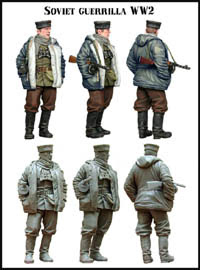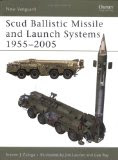 M48A3 in Vietnam in Action
M48A3 in Vietnam in Actionby David Doyle
Publishers Description: The M48 Patton tank was the most prominent U.S. tank during the Vietnam War years of the 1960-1970s. U.S. Marines, who arrived in Vietnam with M48A3s in March 1965, were the first American forces to bring tanks to Vietnam. Close behind was the U.S. Army, with its Patton's in October 1965. Beginning in July 1971 the US began supplying M48A3 tanks to the South Vietnamese Army in line with the commitment to the Vietnamization of the war. Although the 52-ton Patton was received with some skepticism when introduced, the M48 possessed features that proved well adapted to combat conditions in Southeast Asia. The thick armor of the M48 protected crewmen from Viet Cong mines, and the vehicle’s sheer mass enabled it to force its way through thick jungle vegetation. Illustrated with 109 photos, plus color profiles and detailed line drawings.

M50A1 Ontos Detail in Action
by David Doyle




 GULF OF OMAN (Feb. 2010): An F/A-18C Hornet piloted by Cmdr. Benjamin Hewlett, prospective commanding officer of Strike Fighter Squadron (VFA) 131, launches from the Nimitz-class aircraft carrier USS Dwight D. Eisenhower (CVN 69) prior to the squadron's change of command ceremony. VFA 131 is embarked aboard Dwight D. Eisenhower for six-month deployment as a part of the on-going rotation of forward-deployed forces. (U.S. Navy photo by Chad R. Erdmann)
GULF OF OMAN (Feb. 2010): An F/A-18C Hornet piloted by Cmdr. Benjamin Hewlett, prospective commanding officer of Strike Fighter Squadron (VFA) 131, launches from the Nimitz-class aircraft carrier USS Dwight D. Eisenhower (CVN 69) prior to the squadron's change of command ceremony. VFA 131 is embarked aboard Dwight D. Eisenhower for six-month deployment as a part of the on-going rotation of forward-deployed forces. (U.S. Navy photo by Chad R. Erdmann)  GULF OF OMAN (Feb. 2010): Cmdr. Thomas Bush, commanding officer of Strike Fighter Squadron (VFA) 131, executes a high-speed fly-by in an F/A-18C Hornet over the aircraft carrier USS Dwight D. Eisenhower (CVN 69) during a change of command ceremony. Bush was relieved by Cmdr. Benjamin Hewlett. Dwight D. Eisenhower is conducting a scheduled six-month deployment as a part of the on-going rotation of forward-deployed forces. (U.S. Navy photo by Chad R. Erdmann)
GULF OF OMAN (Feb. 2010): Cmdr. Thomas Bush, commanding officer of Strike Fighter Squadron (VFA) 131, executes a high-speed fly-by in an F/A-18C Hornet over the aircraft carrier USS Dwight D. Eisenhower (CVN 69) during a change of command ceremony. Bush was relieved by Cmdr. Benjamin Hewlett. Dwight D. Eisenhower is conducting a scheduled six-month deployment as a part of the on-going rotation of forward-deployed forces. (U.S. Navy photo by Chad R. Erdmann) 
 Napoleon Bonaparte
Napoleon Bonaparte Erich von Manstein
Erich von Manstein





 An F-15D Eagle, P-51 Mustangs, and an A-10 Thunderbolt II team up during an air show at Nellis Air Force Base, Nevada. (U.S. Air Force photo by Julie Ray, www.AF.mil)
An F-15D Eagle, P-51 Mustangs, and an A-10 Thunderbolt II team up during an air show at Nellis Air Force Base, Nevada. (U.S. Air Force photo by Julie Ray, www.AF.mil) Source: Wikipedia
Source: Wikipedia

 OVER VIRGINIA -- An A-10 Thunderbolt II, F-86 Sabre, P-38 Lightning and P-51 Mustang fly in a heritage flight formation during the air show at Langley Air Force Base, Virginia. The formation displays four generations of Air Force fighters. (U.S. Air Force Photo.)
OVER VIRGINIA -- An A-10 Thunderbolt II, F-86 Sabre, P-38 Lightning and P-51 Mustang fly in a heritage flight formation during the air show at Langley Air Force Base, Virginia. The formation displays four generations of Air Force fighters. (U.S. Air Force Photo.)












 The wreck of AHS Centaur, a WWII Australian hospital ship, has been located off Australia's north-east coast. The Centaur was torpedoed and sunk by a Japanese submarine off the coast of Queensland, Australia on May 14, 1943. Of 332 people aboard, 268 died.
The wreck of AHS Centaur, a WWII Australian hospital ship, has been located off Australia's north-east coast. The Centaur was torpedoed and sunk by a Japanese submarine off the coast of Queensland, Australia on May 14, 1943. Of 332 people aboard, 268 died.





 M26/M46 Pershing Tank
M26/M46 Pershing Tank












